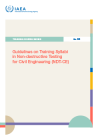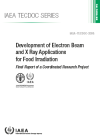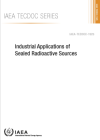Third International Conference on Applications of Radiation Science and Technology (ICARST-2025)
7–11 April 2025, Vienna, Austria
Radiation plays a crucial role in making our lives safer, cleaner, and more efficient every day, often without us realizing it. Whether travelling by plane, receiving medical treatment, visiting a museum or eating a piece of fruit we may be benefit from these technologies. In April, the IAEA will host the ICARST-2025 Conference to discuss the latest advancements in radiation science and technology.
Purpose and Objectives
The Third International Conference on Applications of Radiation Science and Technology (ICARST-2025) builds on the success of its predecessors in 2017 and 2022. The purpose of the event is to:
- provide a comprehensive review of significant developments in the applications of radiation science and technology, highlighting the state of the art in the field;
- assess national, regional, and global initiatives for implementing proven industrial applications of radiation science and technology;
- Create a collaborative platform for representatives from industry and academia to develop new initiatives;
- and chart a clear-cut pathway for the adoption of radiation technologies to support the achievement of the United Nations Sustainable Development Goals.
Read the Announcement and Call for Papers for conference details and be part of the conversation using #ICARST2025 on social media!







